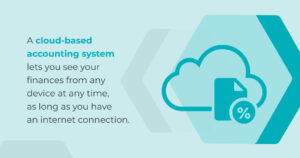Reading Time: 5 minutes
If you dread working with your nonprofit’s financials, they might be unnecessarily complex. Financial complexity can cause problems that range from confusion to legal issues. Simplifying this aspect is an essential part of setting yourself up for success and allowing you to focus on achieving your group’s mission.
Reducing complexity can come in many forms, depending on how you organize your finances. We’ll go over some ways to identify areas of opportunity, improve your understanding of your data, and streamline common tasks. Let’s take a closer look at financial complexity and how to reduce it in nonprofits.
What Is Financial Complexity?
Financial complexity generally signifies how difficult a system is to understand or how many different elements it contains, such as accounts and transactions. The harder it is to work with your finances, the more complex they might be.
Naturally, this additional complexity can be frustrating for your team. It makes the system confusing, limits your ability to monitor results, and contributes to the potential for errors. Financial complexity can ultimately get in the way of reaching your goals and could even increase the risk of more serious problems, like fraud and legal penalties. Simplifying your finances is nothing short of crucial. It can help you work smarter, giving you more time to focus on your goals.
How to Handle Financial Complexity in Nonprofits
Reducing complexity may seem challenging initially, but you have many options for approaching this goal. Here are a few tips on how to simplify your nonprofit’s finances.
1. Make the Most of Your Data
Use data analytics wherever possible. An accounting system with robust reporting tools can help you proactively analyze your information. Even if you struggle to simplify your accounts, analytics can help wrangle all the data into actionable insights. It pulls everything together so you can learn from it.
Look for insights about where your resources are going and whether they’re supporting your goals. You can also find new opportunities. For instance, if you find that your online donations are typically higher than cash donations, you might promote your online tool at events with a QR code or instructions to visit your website.
With analytics, you can also create understandable reports to share with members and stakeholders. Donors often appreciate transparency, with many expressing a desire for nonprofits to communicate the impact of their programs. Analytics allow you to share your financials and celebrate successes in a simple, engaging way.
You can also simplify your approach to data by zeroing in on where it’s coming from. Figure out what information is most important for reaching your goals, and focus on those sources. Remove any information that isn’t helping.
2. Increase Visibility
One of the biggest problems for many nonprofits is a lack of visibility. If you’re still sending spreadsheets back and forth, it’s time to consider a more modern solution. A cloud-based accounting system lets you see your finances from any device at any time, as long as you have an internet connection. You’ll see changes in real-time, so you don’t need to worry about working with outdated information.
Improved data visibility keeps everyone on the same page. Your team can work faster and make more informed decisions, especially if you have a diverse set of funding sources. Visibility also helps when it’s time for reporting because you can easily access the information regulating agencies need instead of sifting through countless files and spreadsheets.
3. Communicate With Stakeholders
Always bring your stakeholders into the loop when evaluating your finances. Talk to members, staff, volunteers, partners, donors, and anyone else you think might have a say in how the group runs its finances. As you share results, encourage input from these people and see if they have any preferences for resource allocation or ideas to improve simplicity. Perhaps your staff knows of an unnecessary expense you can remove or can identify a troublesome task that slows people down.
4. Modernize Your Systems
We’ve already discussed how modern systems can improve visibility, but the right software can offer other benefits, like compliance and privacy controls. You can find these features in an accounting system designed for nonprofits. You might spend hours on processes that an accounting program can do in a few seconds. Updating your financial software can dramatically improve efficiency, giving you more time to focus on furthering your mission.
Here are some areas where specialized accounting programs can help nonprofits:
- Compliance: Generate reports designed to meet requirements from the Financial Accounting Standards Board (FASB) and the Governmental Accounting Standards Board (GASB).
- Reporting: Other reports provide insights built for the unique financial environment of nonprofits.
- Configurable dashboards: Every organization is different, and customizable dashboards let you focus on what’s most important to your nonprofit.
- Security: Basic accounting software might not offer the security and fraud protection your organization needs. A secure, cloud-based system can keep your data safe and provide easy auditing.
- Scalability: Your goal is to grow — you need software that grows with you. Your accounting software should accommodate whatever comes next, whether that includes more accounts or users.
5. Trim the Fat
Every organization has some unnecessary processes. Trim the fat by taking a close look at where you allocate your resources. Remove any unnecessary elements that might be overcomplicating your finances, or look for areas to consolidate. For example, if you have a large office but a small staff, you might look for a smaller space to save costs.
While making these decisions, keep your nonprofit’s goals front and center. Focus on the big picture as you decide which costs help you reach your goals.
The Advantages of Simplifying Your Finances
When you reduce fiscal complexity, you get an array of benefits that support a nonprofit organization, such as:
- Speed: Work faster and more efficiently with less complicated information to sift through and a configuration that’s easy to understand. If you use a system with purpose-built tools, you can eliminate many of your day-to-day tasks and spend more time focusing on your goals.
- Fewer errors: An easy-to-use system with extensive visibility can help mitigate errors, ensuring more dependable reporting.
- Donor and staff satisfaction: Your staff can avoid time-consuming, frustrating processes, and your donors enjoy more transparency into the group’s work.
- Improved compliance: When you know where to find your data, you can easily generate timely and accurate reports to meet regulatory requirements.
See How MIP® Can Streamline Nonprofit Finances
Reducing financial complexity may seem challenging, but MIP® makes things simple with a purpose-built solution designed for nonprofits. This modern accounting software is easy to use and contains features to address the biggest challenges of nonprofit organizations, like staying organized, creating financial reports, and maintaining security.
You didn’t enter the nonprofit field to crunch numbers — streamline your finances and get back to what’s really important. Request a demo today to get started with MIP.






